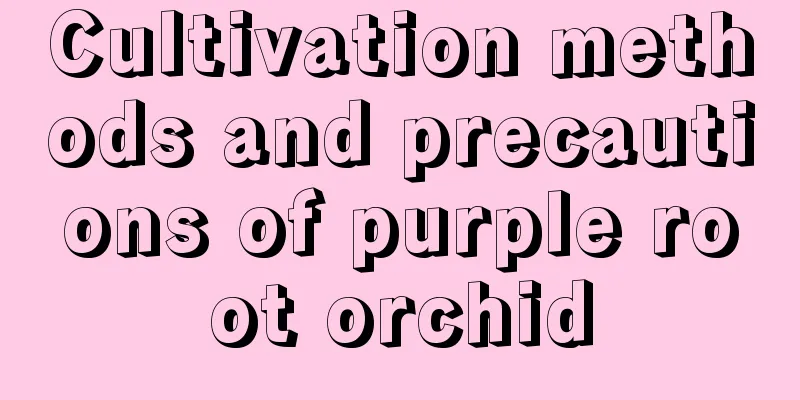Cultivation methods and precautions of purple root orchid

1. Maintenance methods1. Temperature: The most suitable temperature is 18 to 25 degrees, because according to its habits, it likes warmth. In winter, do not place it in a place that is too cold. Try to keep it between ten and twelve degrees, but not too high, because it is in a dormant period at this time. 2. Light: It likes light but is afraid of strong light. In summer, a little shade is needed, but not completely covered. The shading degree can be around 50 to 60 percent. In other seasons, full sun is generally sufficient, unless the direct sunlight is too strong. Although it hibernates in winter, it should not be placed in a place that is too dark. 3. Watering: Purple root orchid likes moisture but is afraid of waterlogging. It is best to choose a substrate that is easy to drain, and do not water too much during normal times, so as to avoid water accumulation. But water cannot be lacking, otherwise flowering will be affected. Otherwise, wait until the substrate is dry for a long time before watering. 4. Fertilization: It does not require too much fertilizer. Choose soil that is rich in nutrients, and then add some fertilizer. There will be less need for topdressing, and it can be done 1-2 times a month. 2. Breeding techniques1. Reproduction: The most commonly used method is sowing. Generally speaking, the method used is "pot sowing", that is, breeding at home. June to July is more suitable, with moderate temperatures. After sowing, you also need to adjust the surrounding temperature so that it will germinate in about twenty days. However, if you want it to bloom, you need to wait for a long time, usually three to four years. 2. Repotting: It can be changed once every one or two years. It is best to use soil that contains a lot of humus and has good drainage, such as sandy loam, leaf mold, etc. If the nutrients in the soil are not sufficient, you can mix some extra. 3. Problem diagnosis and treatment1. Disease: Too much watering or being exposed to rain during the rainy season can easily lead to "root rot", which will cause root rot and affect the growth of the entire plant. At this time, you need to control the water, remove the plant from the pot and cut off the rotten roots. Using some pesticides may also be helpful. 2. Pests: The main type is scale insects, which can be removed with alcohol, tweezers, toothpicks and other tools, or sprayed with pesticides. IV. Other issues1. Toxicity: Although it gives people the feeling of a strong floral scent, it is non-toxic. 2. Can it be raised at home?: It is quite suitable as it is a flowering variety. |
>>: How to grow purple-leafed barberry
Recommend
High-yield and high-quality cultivation techniques of Zizania latifolia
Zizania latifolia , also known as water bamboo sh...
Illustration of the method of cutting camellia branches
Camellia cutting mechanism When propagating camel...
How to prune the lucky tree
The lucky tree is a popular indoor plant not only...
Common diseases of osmanthus
Brown spot symptoms In the early stage of the dis...
When is the best time to graft grapevines?
Grapevine cutting time Grapevine cuttings are usu...
The fastest rooting method for Schefflera hydroponica
1. Hydroponic time In order to increase the rooti...
How to make grape cuttings take root easily
When planting grapes, there will be a more troubl...
How often should I water my green radish?
1. Watering principles Pothos is a relatively moi...
When to plant delphinium seeds
Harvesting delphinium seeds Before sowing delphin...
When is the best season to plant roses? When is the best time to plant roses?
Roses should be planted in loose, fertile, well-d...
How to prune plumeria
1. Pruning and height control Frangipani grows ve...
Difference Between Peony and Dahlia
Morphological differences Peony is also known as ...
How to reproduce Michelia intoxicata
Seed propagation Seed Collection The best seeds f...
Olive Growing Environment and Growing Area Conditions
Olive Growing Environment and Conditions Olives a...
Her Kalanchoe fills a whole pot, but yours only has a few flowers. Why?
Now is the season when Kalanchoe blooms. I believ...









